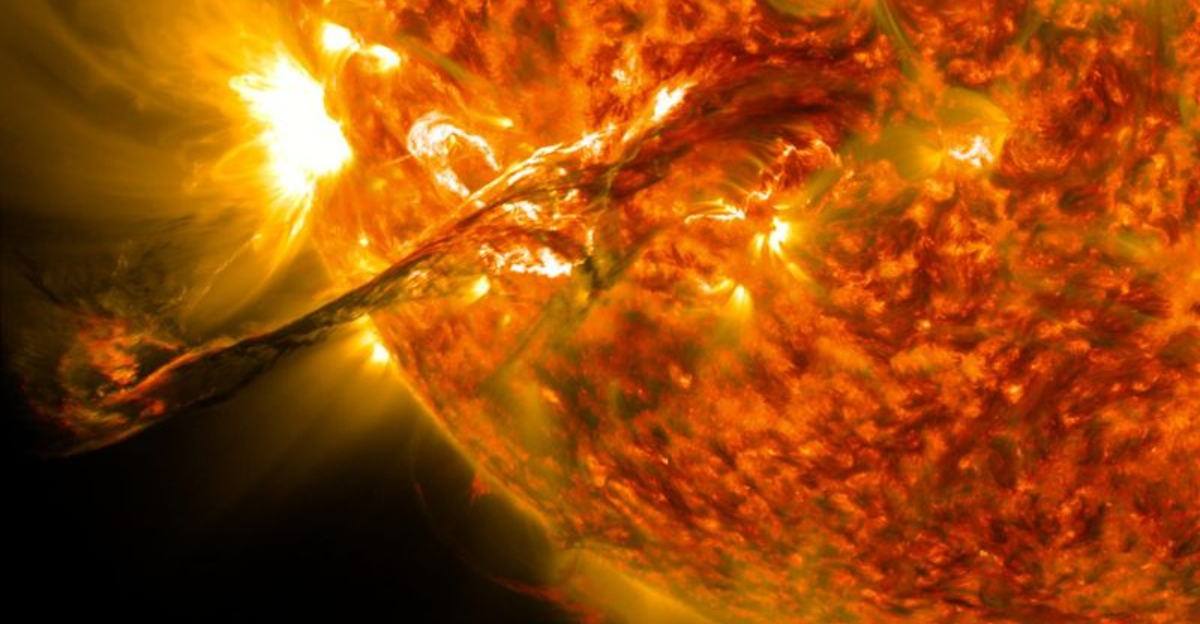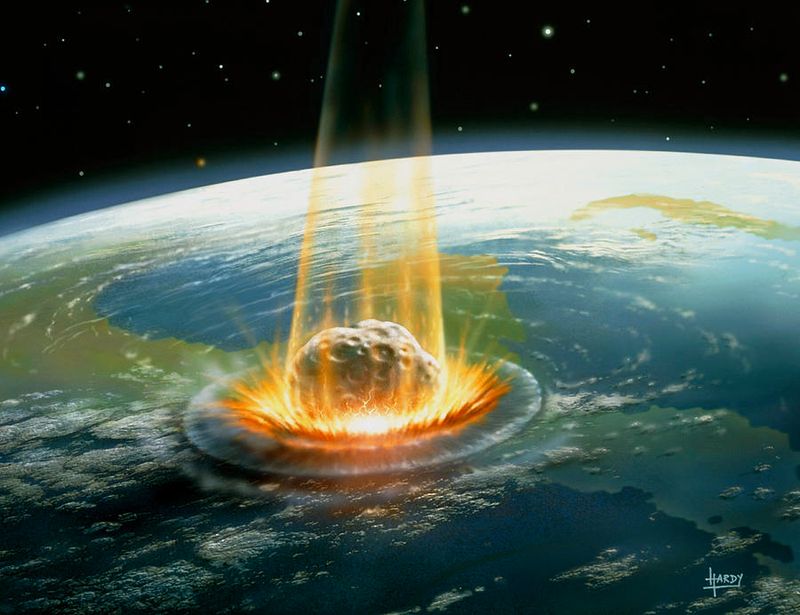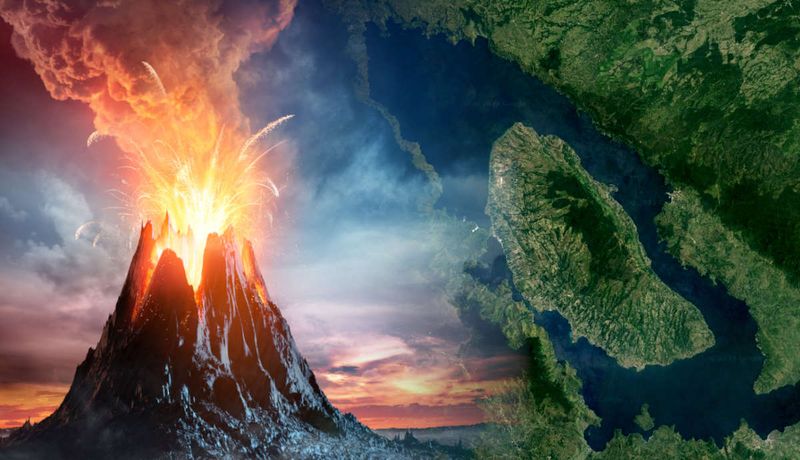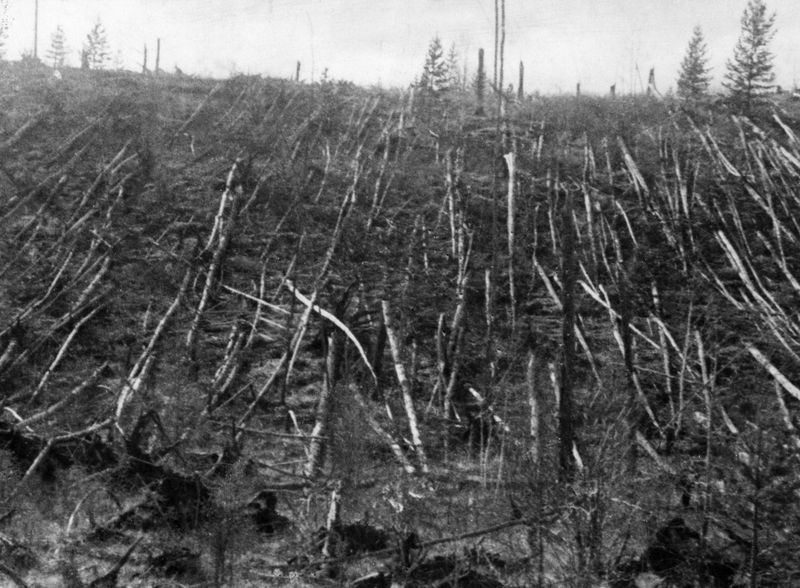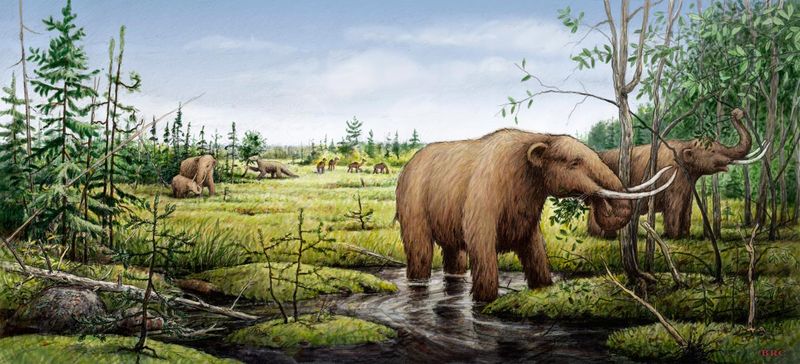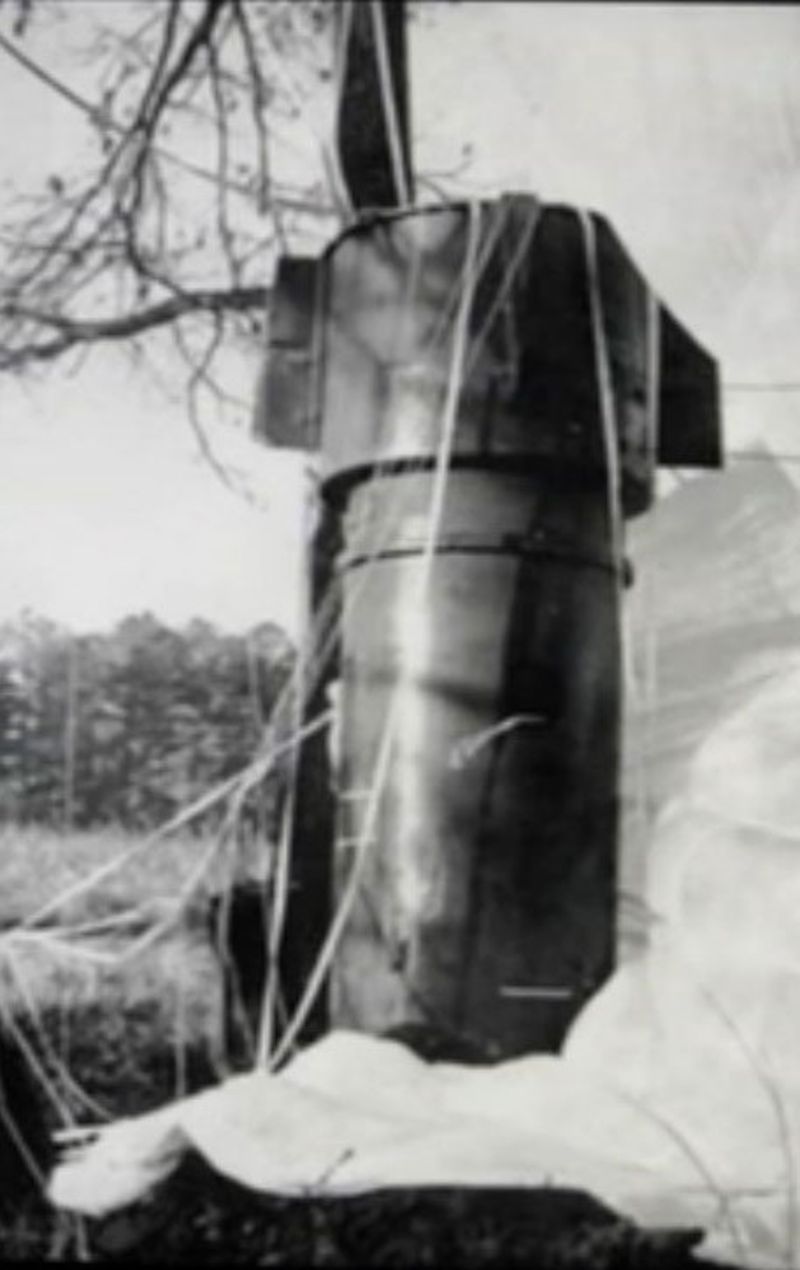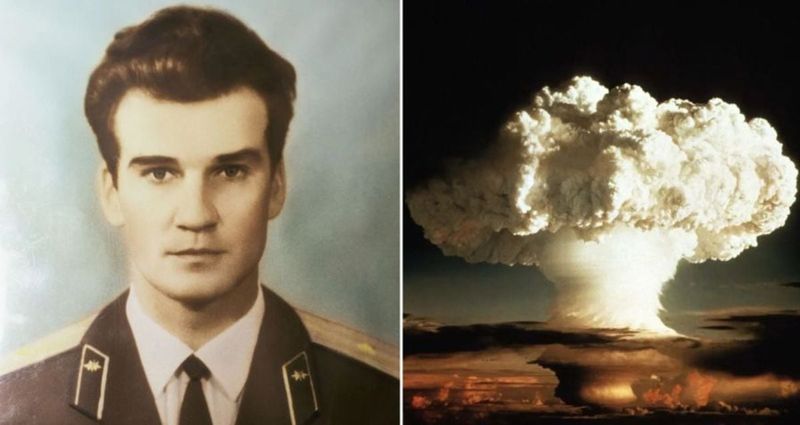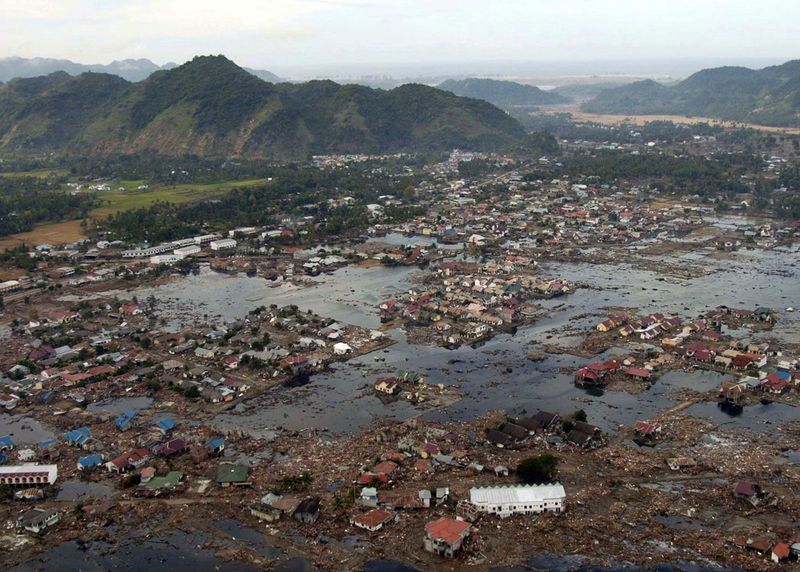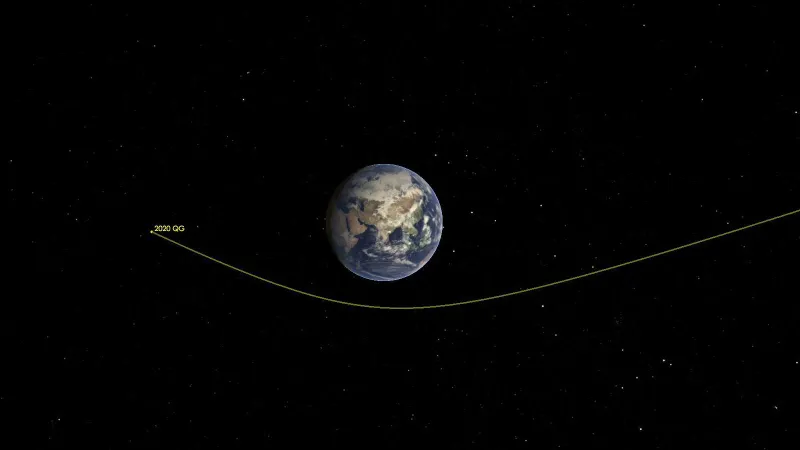Our planet has faced countless threats throughout its history, narrowly avoiding complete destruction multiple times. From massive asteroids to nuclear war, these close calls have shaped Earth’s story and tested life’s resilience. Imagine how differently things might have turned out if any of these events had gone slightly differently!
1. The Chicxulub Asteroid Impact
Sixty-six million years ago, a 6-mile-wide space rock slammed into Mexico with the force of 10 billion atomic bombs. The impact launched tsunamis higher than skyscrapers and ignited worldwide wildfires.
Dust blocked the sun for years, causing a deadly winter that wiped out 75% of all species, including the mighty dinosaurs. Small mammals survived by hiding underground and eating whatever they could find.
Had this asteroid hit just 30 seconds earlier or later, it might have landed in deep ocean, potentially lessening its devastating impact and possibly allowing dinosaurs to survive alongside mammals.
2. The Toba Supervolcano Catastrophe
Around 74,000 years ago, Mount Toba in Indonesia exploded with such violence that it left a crater 60 miles long. Ash darkened skies worldwide, plunging Earth into a volcanic winter lasting years.
The eruption was 2,800 times stronger than Mount St. Helens! Human populations crashed dramatically – genetic evidence suggests our ancestors dwindled to perhaps just a few thousand breeding pairs.
Some scientists believe this event nearly wiped out humanity completely. If the eruption had been slightly larger or lasted longer, humans might have joined the list of extinct species, forever changing Earth’s future.
3. The Carrington Event Solar Storm
In September 1859, the sun unleashed a massive solar flare that hit Earth head-on. Telegraph operators received electric shocks, papers caught fire, and spectacular auroras lit up skies worldwide – even in places like Hawaii and Cuba!
Fortunately, electricity wasn’t widely used yet. A similar storm today would fry power grids, disable satellites, and potentially cause worldwide blackouts lasting months.
We narrowly avoided disaster in 2012 when a Carrington-level solar storm missed Earth by just nine days. NASA estimates the economic damage would have reached $2 trillion if it had struck our modern, technology-dependent world.
4. The Great Dying Extinction Event
Earth’s worst day happened 252 million years ago during the Permian-Triassic extinction. Massive volcanic eruptions in Siberia spewed carbon dioxide and methane for thousands of years, turning oceans acidic and poisoning the atmosphere.
An unbelievable 96% of marine species and 70% of land animals vanished. Forests died, insects disappeared, and even hardy microbes struggled to survive in the toxic seas.
The planet came frighteningly close to becoming completely lifeless. Had the eruptions continued just a bit longer, the remaining 4% of species might have perished too, potentially preventing the evolution of dinosaurs, mammals, and eventually humans.
5. The Mysterious Tunguska Explosion
On June 30, 1908, something exploded over Siberia with the force of 1,000 Hiroshima bombs. The blast flattened 80 million trees across 830 square miles, yet mysteriously left no crater.
Scientists believe a 200-foot asteroid or comet fragment detonated 5 miles above Earth’s surface. Eyewitnesses reported a fireball brighter than the sun and heat so intense it burned clothing.
If this cosmic bomb had arrived just 4 hours later, it would have exploded over St. Petersburg, potentially killing millions. Such airburst events happen roughly every century – making Tunguska a sobering reminder of space threats we still face today.
6. The Abrupt Younger Dryas Ice Age
Around 12,800 years ago, Earth’s climate suddenly plunged into deep freeze. Temperatures dropped by 15°F in less than a decade – imagine Boston’s climate shifting to northern Greenland’s virtually overnight!
The leading theory suggests a comet struck the North American ice sheet, though some scientists blame a sudden shutdown of ocean currents. Either way, the consequences were devastating for early human societies and megafauna.
Many large mammals like woolly mammoths and saber-toothed cats went extinct. Human populations crashed as growing seasons shortened dramatically. Had the cold persisted longer, agriculture might never have developed, potentially preventing civilization as we know it.
7. The Goldsboro Nuclear Bomb Accident
January 24, 1961: A B-52 bomber broke apart over North Carolina, accidentally dropping two hydrogen bombs. Each packed 250 times more power than the Hiroshima bomb.
One bomb deployed its parachute and landed intact. The other crashed into a muddy field at 700 mph, breaking apart on impact. Horrifyingly, investigation revealed five of its six safety mechanisms had failed – only a single switch prevented detonation!
Had that last switch failed, much of the eastern seaboard would have been devastated by a 3.8-megaton explosion. The radioactive fallout could have killed millions and made large areas uninhabitable for decades, potentially triggering nuclear war with the Soviet Union.
8. The Soviet Nuclear False Alarm Incident
September 26, 1983: Soviet early warning systems detected five incoming American nuclear missiles. Alarms blared as computers confirmed the attack was real.
Lieutenant Colonel Stanislav Petrov, the officer in charge, had just minutes to decide whether to alert Soviet leadership – who would almost certainly launch a full nuclear counterattack. Despite all indicators showing an American first strike, Petrov’s gut told him something was wrong.
He declared it a false alarm, later proven correct when sunlight reflecting off clouds confused the satellites. His split-second decision likely saved hundreds of millions of lives and prevented nuclear winter. Petrov later admitted, “I was just at the right place at the right time.”
9. The Indian Ocean Megathrust Earthquake
December 26, 2004: The seafloor near Indonesia suddenly lurched 50 feet horizontally and 16 feet vertically. The resulting magnitude 9.1 earthquake released energy equivalent to 23,000 Hiroshima bombs and actually made Earth wobble on its axis.
The displaced water formed tsunami waves reaching 100 feet high, traveling at jet-plane speeds across the ocean. Coastal areas in 14 countries were devastated as walls of water crashed miles inland without warning.
Over 230,000 people perished in one of history’s deadliest natural disasters. Scientists warn the earthquake could have been even worse – had it lasted just five minutes longer, the tsunamis might have reached twice their actual height.
10. The 2020 Stealth Asteroid Flyby
On August 16, 2020, asteroid 2020 QG silently zipped past Earth at just 1,830 miles above the surface – closer than many satellites orbit! The car-sized space rock set a record for the closest non-impacting asteroid ever observed.
The truly unsettling part? NASA didn’t spot it until six hours AFTER it passed by. The asteroid approached from the direction of the sun, making it virtually invisible to telescopes until it had already gone.
While this particular rock was too small to cause major damage, it highlighted a serious blind spot in our planetary defense system. Larger asteroids could approach undetected from the same direction, potentially giving us zero warning before impact.
